
Big Bang
by
Simon Singh
Published 1 Jan 2004
If only the distance to just one Cepheid variable star could be found, then it would be possible to anchor Leavitt’s measurement scale and gauge the distance to every single Cepheid. The decisive observations that made this possible and thereby calibrated the Cepheid distance scale were achieved thanks to a team effort by astronomers who included Harlow Shapley and Denmark’s Ejnar Hertzsprung. Together they used a combination of techniques, including parallax, to measure the distance to one Cepheid variable, which then transformed Leavitt’s research into the ultimate distance guide for the cosmos. Cepheid variables could act as a yardstick for the universe.
…
They decided that Eta Aquilae and Delta Cephei belonged to a new class of variable star, which we now call Cepheid variables, or simply Cepheids. Some Cepheids are very subtle, such as Polaris, the North Star, which is our closest Cepheid. William Shakespeare was completely unaware of the star’s variable nature, and in Julius Caesar he has Caesar proclaim: ‘But I am constant as the Northern Star.’ Although this star is constant inasmuch as it always indicates north, its luminosity varies and it grows slightly brighter and dimmer roughly every four nights. Today we know what goes on inside a Cepheid variable star, what causes its asymmetric variability and what makes it different from other stars.
…
Professor Charles Young of Princeton University was so impressed that he called her ‘a variable-star fiend’. Of the various types of variable star, Leavitt developed a particular passion for Cepheids. After months spent measuring and cataloguing Cepheid variables, she yearned to gain some understanding of what determined the rhythm of their fluctuations. In an effort to solve the mystery she turned her attention to the only two firm pieces of information available for any Cepheid variable: its period of variation and its brightness. Ideally, she wanted to see whether there was any relationship between period and brightness – perhaps brighter stars might prove to have a longer period of variation than dimmer stars, or vice versa.
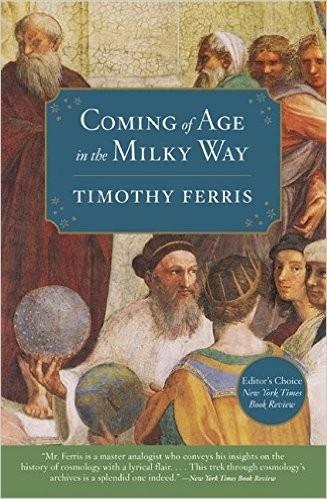
Coming of Age in the Milky Way
by
Timothy Ferris
Published 30 Jun 1988
Once the absolute magnitude of any star is known, it is a simple matter to compute its distance: All the astronomer has to do is measure its apparent magnitude and then apply the formula that brightness decreases by the square of the distance. If, for instance, we have two Cepheid variables with the same period, we may assume that they have about the same absolute magnitude. If the apparent magnitude of one is four times that of the other, we conclude (barring complications such as the interference of an intervening interstellar cloud) that the dimmer star is twice as far away. The relationship between the periodicity and the absolute magnitude of Cepheid variable stars was discovered in 1912 by Henrietta Swan Leavitt, one of a number of women hired at meager wages to work as “computers” in the Harvard College Observatory office in Cambridge, Massachusetts.
…
Now, with his Cepheid variable work in hand, Shapley concluded that the correct figure was three hundred thousand light-years—more than ten times larger than the dimensions entertained by his contemporaries, and three times the most generous estimates we have today.* Various errors contributed to Shapley’s inflated picture of the Milky Way galaxy. Like many of his contemporaries, he underestimated the extent to which clouds of interstellar gas and dust dim the images of distant stars, making them appear farther away than they really are. Moreover, he assumed that the Cepheid variable stars he observed in globular clusters were essentially identical to those Henrietta Leavitt had found in the Magellanic Clouds; actually, as Walter Baade and other astrophysicists were to find, the cluster variables are less massive and intrinsically less bright, and therefore by implication less distant, than a straightforward comparison of their periods with those of their younger cousins would imply.
…
His efforts soon bore fruit, and on February 19, 1924, he wrote Shapley, who by then had left Mount Wilson to become director of Harvard College Observatory, a laconic note containing one of the most momentous findings in the history of science: “You will be interested to hear that I have found a Cepheid variable in the Andromeda Nebula.”13 Hubble deduced that Andromeda lies about one million light-years away, an estimate half the distance of later ones but clearly sufficient to establish that the spiral was well beyond even Shapley’s “big galaxy.” Shapley replied sourly that he found Hubble’s letter to be “the most entertaining piece of literature I have seen for a long time.”14 Later he complained that Hubble had given him insufficient credit for his priority in using Cepheid variables to chart distances. But the game was over. Hubble’s paper announcing that he had found Cepheids in spirals—read (in his Olympian absence) at a joint meeting of the American Astronomical Society and the American Association for the Advancement of Science in Washington, D.C., on New Year’s Day, 1925—initiated the final decline of the nebular hypothesis, the ascendancy of the island universe hypothesis, and humankind’s realization that we live in one among many galaxies.
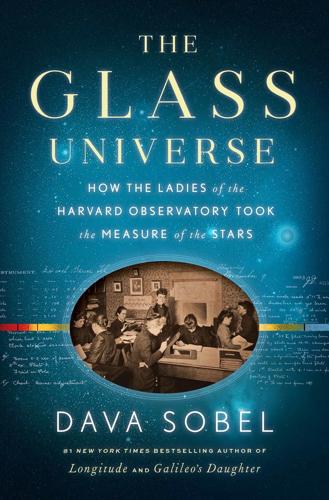
The Glass Universe: How the Ladies of the Harvard Observatory Took the Measure of the Stars
by
Dava Sobel
Published 6 Dec 2016
Having limned the extent of the Milky Way on a foundation of Cepheids, Shapley recognized the need to refine Miss Leavitt’s magnitude measurements, to make sure they were strong enough to support his conclusions. In a letter to Pickering on July 20, 1918, Shapley stated, “I believe the most important photometric work that can be done on Cepheid variables at the present time is a study of the Harvard plates of the Magellanic clouds. Probably Miss Leavitt’s many other problems have interrupted and delayed her work on the variables of the clouds for the interval of six or seven years since her preliminary work was published.” No doubt her illness, which had been diagnosed as cancer, figured chief among Miss Leavitt’s problems, though her many other scientific assignments had effectively barred her from further pursuit of her Cepheid discoveries.
…
Shapley closed his letter with a prediction: “The theory of stellar variation, the laws of stellar luminosities, the arrangement of objects throughout the whole galactic system, the structure of the clouds—all these problems will benefit directly or indirectly from a further knowledge of the Cepheid variables.” • • • THE MEMBERS OF THE AAVSO, those devoted observers of the long-period variables, met in November 1918 at the Harvard College Observatory. They had been accustomed to getting together in Connecticut or New Jersey at the homes of the association’s officers, but now that Leon Campbell had returned from Peru and resumed close communication with the volunteers, the observatory served as the new unofficial headquarters.
…
I had not wanted to tell him that I was quite a good typist myself.” Miss Payne happened to be in Shapley’s office the day he received a letter, dated February 19, 1924, from Edwin Hubble, a former colleague of his at Mount Wilson. “Dear Shapley,” it began. “You will be interested to hear that I have found a Cepheid variable in the Andromeda Nebula.” Few announcements could have rattled Shapley more than this one. The Andromeda Nebula, dimly visible to the naked eye, was the largest, most closely observed of all the spirals. A nova had erupted at its heart in August 1885, but was never captured on glass, given the primitive state of celestial photography at that early date.
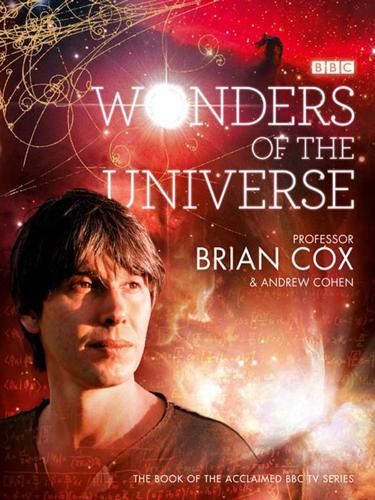
Wonders of the Universe
by
Brian Cox
and
Andrew Cohen
Published 12 Jul 2011
During the 1920s, Edwin Hubble was using what was then the world’s most powerful telescope at the Mount Wilson Observatory in Pasadena, California, to observe stars called Cepheid variables. These Cepheid variables are stars whose brightness varies regularly over a period of days or months, and they are astonishingly useful to astronomers because the period of their brightening and dimming is directly related to their intrinsic brightness. In other words, it is a simple matter to work out exactly how bright a Cepheid variable star actually is just by watching it brighten and dim for a few months. If you know how bright something really is, then measure how bright it looks to you, you can work out how far away it is.
…
If you know how bright something really is, then measure how bright it looks to you, you can work out how far away it is. Edwin Hubble’s research project was simply to search for Cepheid variables in the sky and measure their distance from Earth. During his observations, he discovered two remarkable things: firstly, he quickly determined that the Cepheid variables he found in the so-called spiral nebulae (which at the time were thought to be clouds of glowing gas within the Milky Way) were in fact well outside our galaxy. For the first time, Hubble showed that there are other galaxies in the Universe, millions of light years away. This image shows some of the most distant galaxies that we have observed – and all appear in a bright, sharp, red colour.
…
Remember that red light has a longer wavelength than blue light, so seeing light redshifted simply means the wavelength is longer than expected. Hubble made his second great discovery by plotting a graph of the redshift of the light from the distant galaxies against their distance, which he had calculated from his observations of the Cepheid variables. To his great surprise, Hubble noticed that his graph was approximately a straight line. This is because the further away a galaxy is, the greater its redshift – i.e. the more its light is stretched, and there is a very simple relationship between the distance and the redshift. Why is this?
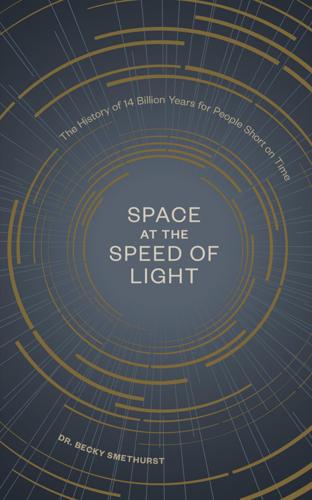
Space at the Speed of Light: The History of 14 Billion Years for People Short on Time
by
Becky Smethurst
Published 1 Jun 2020
They were the fuzzy, dusty things that umbrella-ed everything from star-forming regions in our own galaxy to the remnants of stars that had gone supernova3 and, unknown at the time, galaxies of billions of stars. Hubble was trying to work out the distance to these “spiral nebulae” using stars that pulsated, changing their brightness.4 These stars are called Cepheid Variables and were intensely studied in the Milky Way by Henrietta Leavitt in the early twentieth century.5 She discovered that how often the stars pulsed was related to how bright they are, something we now call the Leavitt Law. The faster a star pulses, the brighter it shines. When Hubble spotted these pulsating stars in the “spiral nebula,” he needed to understand how fast they pulsed in order to know how bright they were—and then from how bright they appeared he would know how distant the star was.
…
When Hubble spotted these pulsating stars in the “spiral nebula,” he needed to understand how fast they pulsed in order to know how bright they were—and then from how bright they appeared he would know how distant the star was. This is the same thing that you do when you cross a road at night; based on how bright a car’s headlights appear, you can tell how far away it is. From this, Hubble found that the Cepheid Variables in the “spiral nebulae” were more distant than anyone had ever considered, meaning the sizes of these spiral nebulae were as big as the Milky Way itself. What Hubble had actually observed were galaxies. Hubble didn’t stop there though. He also took what’s called a spectrum of each galaxy.
…
The interaction of these two processes can cause some stars to pulse. 5Sadly, Leavitt didn’t live to see Hubble use her work to prove the universe was expanding, or gain much recognition for it while she was alive. Today, all distances measured in the universe are, essentially, calibrated against distances measured from Cepheid Variable stars. The scale of the universe literally rests on Leavitt’s shoulders. A black hole is an object so dense that light can’t escape from it. This means that the velocity you would need to escape the gravitational pull of that object would be greater than the speed of light. To understand this properly we have to understand gravity a bit differently from how Newton thought about it.
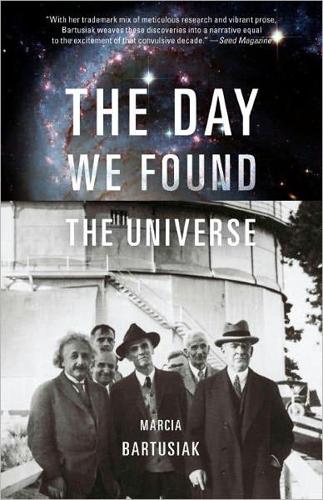
Day We Found the Universe
by
Marcia Bartusiak
Published 6 Apr 2009
From the length of this period and the shape of the curve (sharp rise and slow decline), Hubble now comprehended that he had captured that elusive and rare celestial beast—a Cepheid variable, a star seven thousand times brighter than our Sun. But it appeared so dim—the barest smudge on his photographic plate—that Hubble knew it had to reside at a great distance. It was on average more than one hundred thousand times dimmer than the faintest stars visible to the unaided eye. The photographic plate of Andromeda (M31) on which Edwin Hubble identified a Cepheid variable star, mistaken at first for a nova, in a spiral nebula—the first step in Hubble's opening up the universe (Courtesy of the Observatories of the Carnegie Institution of Washington) At some point during these deliberations, Hubble went back to his logbook, page 157, and quickly scrawled an added note on the side of the page to amend the report of his October 5 observing run.
…
She dutifully reported her findings in the 1908 Annals of the Astronomical Observatory of Harvard College, with thirteen pages taken up with listing every new variable she had discovered, its exact position in the sky, as well as its minimum and maximum brightness. More intriguing was what she wrote at the end of this paper. Over the course of her painstaking examination of the Small Magellanic Cloud, she came to notice a special group of variable stars, sixteen in number. They were later identified as Cepheid variables, stars that are thousands of times more luminous than our Sun. Their name was derived from one of the first and brightest discovered, δ Cephei, located in the constellation Cepheus the King, a major landmark in the northern sky. These stars regularly vary their brightness in a matter of days or months.
…
For once Hubble dropped his guard and figuratively clicked his heels at this moment of discovery. Hubble couldn't help but notify his nemesis. On February 19 he wrote Harlow Shapley about his efforts over the previous months. Hubble didn't open with polite niceties or inquiries of health. He got straight to the point. “Dear Shapley:—You will be interested to hear that I have found a Cepheid variable in the Andromeda Nebula (M31). I have followed the nebula this season as closely as the weather permitted and in the last five months have netted nine novae and two variables.” His glee in communicating this news jumped off the page as he then provided Shapley with all the technical details on color index corrections and magnitude estimations.
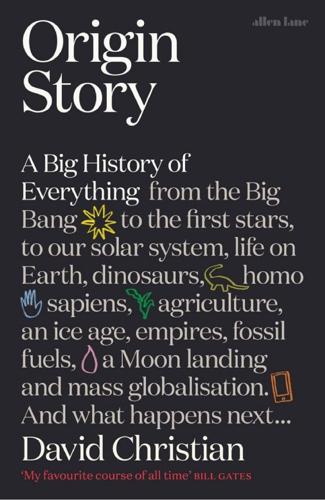
Origin Story: A Big History of Everything
by
David Christian
Published 21 May 2018
In 1923, Hubble used one of the world’s most powerful telescopes, at the Mount Wilson Observatory in Los Angeles, to show that Cepheid variables in what was then known as the Andromeda nebula were so far away that they could not be in our own galaxy. This proved what some astronomers had suspected: that the universe was much larger than the Milky Way and consisted of many galaxies, not just our own. Hubble made an even more astonishing discovery as he began to measure the distance to large numbers of distant objects using Cepheid variables. In 1929, he demonstrated that almost all galaxies appeared to be moving away from us and that the most remote objects seemed to have the largest redshifts.
…
Not until the nineteenth century were astronomers able to measure the distance to nearby stars using parallax. But in any case, the objects Vesto Slipher was studying were much more distant. Fortunately, in the early twentieth century, Henrietta Leavitt, a Harvard Observatory astronomer, found a way to measure the distance to remote stars and nebulae using a particular type of star known as a Cepheid variable, a star whose brightness varies with great regularity (the polestar is a Cepheid). She found a simple correlation between the frequency of the variations and the star’s luminosity, or brightness, so she could calculate a Cepheid’s absolute brightness. Then, by comparing that with the apparent brightness the star had when seen from Earth, she could calculate how far away it was, because the amount of light from a star diminishes by the square of the distance through which it travels.
…
Yes, agreed the steady-staters, galaxies seemed to be moving apart, but new matter was being created at the same time, so at large scales, the universe remained at about the same density and changed little. Eventually, though, the evidence tipped in favor of an expanding universe. In the 1940s, Walter Baade, working at the Mount Wilson Observatory in LA (the same observatory at which Hubble had worked), showed there were two types of Cepheid variable stars, and they yielded different estimates of distance. Baade’s revised calculations suggested that the big bang might have happened more than 10 billion years ago (current best estimates suggest it occurred as much as 13.82 billion years ago). This eliminated the chronology problem. Today we know of no astronomical objects older than 13.82 billion years, which is a strong argument in favor of big bang cosmology.
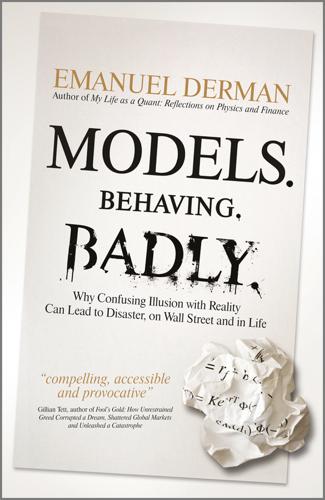
Models. Behaving. Badly.: Why Confusing Illusion With Reality Can Lead to Disaster, on Wall Street and in Life
by
Emanuel Derman
Published 13 Oct 2011
We measure household distances with a ruler or tape measure, but how do you measure the distance to faraway galaxies that the science sections of newspapers so merrily quote as being 100 million light years away? You can’t lay out measuring sticks across the universe. The distance to a galaxy is also an unspoken kind of analytic continuation. One of the ways galactic distances are measured is by observing Cepheid variables, stars whose visible brightness varies. Their true luminosities (“luminosity” is the technical term for their light output, or brightness) have been found to pulsate in a predictably regular way, so that the frequency of their pulsation depends on their luminosity. By measuring the frequency, you can tell something about the true luminosity of these stars.
…
The true luminosity is the actual light emitted by the star; the apparent luminosity is how bright the star looks, as determined by the light that enters your eye. The farther away a star is, the less light from it reaches your eye. Because the light from a star a distance R away radiates out over a sphere of surface 4πR2 , the apparent luminosity decreases with distance inversely proportional to R2 . When you look at a Cepheid variable in a distant galaxy through a telescope, you see its apparent luminosity, but the frequency of the pulsation tells you its absolute luminosity. From the ratio of the true and apparent luminosities you can calculate the distance R to the star.8 What an indirect way this is of measuring something as apparently simple and intuitive as distance!
…
See evil bailouts bare electrons Barfield, Owen Bedazzled (film) Begin, Menachem behavior, human: adequate knowledge and EMM as assumption about explanations for and humans as responsible for their actions and idolatry of models Law of One Price and laws of pragmamorphism and Ben-Gurion, David Bernoulli, Daniel Bernstein, Jeremy beta: CAPM and Betar (Brit Yosef Trumpeldor) binocular diplopia birds Black, Fischer Black-Scholes Model Merton and Blake, William Bnei Akiva (Sons of Akiva) Bnei Zion (Sons of Zion) body-mind relationship Bohr, Aage Bohr, Niels bonds: financial models and See also type of bond Boyle’s Law Brahe, Tycho brain Brave New World (Huxley) Brownian motion bundling of complex products cage: moth in perfect calibration Cape Flats Development Association (South Africa) Capital Asset Pricing Model (CAPM) capitalism caricatures: models as cash. See currency/cash Cauchy, Augustin-Louis causes Cepheid variable stars chalazion chaver (comrade) Chekhov, Anton chemistry: electromagnetic theory and Chesterton, G. K. Chinese choice chromatography Churchill, Winston Coetzee, J. M. coin tossing Coleridge, Samuel Taylor collateralized default obligations (CDOs) collective model, of nucleus Collie, Max commodities communism: in South Africa The Communist Manifesto (Marx and Engels) complex numbers, theory of computer programs consciousness Consolidated Edison stock contempt content: Goethe’s view about method and method and contradictions control: purpose of models and theories and self- and theory of controlling engineering devices Cornell, Joseph Cornford, Francis corporate bonds corporate welfare corporations: bailouts of cosmology Coulomb, Charles creative destruction credit crisis (2007) credit markets curls: electromagnetic theory and currency/cash darkness: Goethe’s view about light and light and Darwin, Charles de Klerk, F.
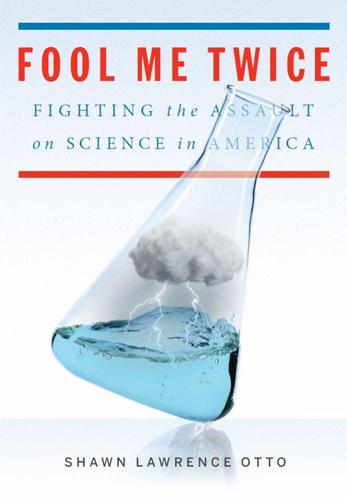
Fool Me Twice: Fighting the Assault on Science in America
by
Shawn Lawrence Otto
Published 10 Oct 2011
What he saw changed humanity’s view of the universe forever—and would further roil the controversy over science’s role in defining the origins of creation. A conservative Baconian observer, Hubble photographed a small blinking star in the Andromeda nebula that he identified as a Cepheid variable. This observation would become iconic in its power. Another astronomer, Harvard College Observatory’s Henrietta Leavitt, had in 1912 shown something remarkable about Cepheid variable stars: The longer their period, the brighter they appeared to be. This made sense. Stars were very faint, and to probe deeply, astronomers began to mount cameras to their telescopes and take very-long-exposure photographs on glass plates so they could capture light from stars that were too faint to see with the human eye.
…
She was paid a premium rate of thirty cents per hour, over the usual two bits, because of the high quality of her work.25 Danish astronomer Ejnar Hertzsprung seized upon Leavitt’s discovery to create a means of measuring intergalactic distances. Using inductive reasoning, Hertzsprung determined in 1913 that if two Cepheid variable stars had similar periods but one was dimmer than the other, it was probably farther away. He found Cepheids close enough to Earth to measure the distance to them using statistical parallax and was able to compare this with their apparent brightness (their brightness as observed from Earth). The resulting formula allowed scientists to measure the distances to all Cepheid variables. These blinking stars became “standard candles” for measuring distance throughout the heavens. This was an immense discovery, and in 1915 American astronomer Harlow Shapley, a liberal Democrat, used it and Mount Wilson’s sixty-inch telescope to map the Milky Way in three dimensions.
…
The debate ended in a draw because there wasn’t yet enough observational data to draw firm conclusions, but this was partly because Shapley, without realizing it, had stopped using Locke’s and Bacon’s inductive reasoning to build knowledge from observation and was instead trying to prove his point with a rhetorical argument—an a priori, top-down, Cartesian approach of first principles that had him arguing more like an attorney than a scientist. When his assistant Milton Humason showed Shapley a photographic plate that seemed to indicate the presence of a Cepheid variable in Andromeda, Shapley shook his head and said it wasn’t possible. Humason had unimpressive formal credentials—he had been elevated to assistant from a lowly mule driver and had but an eighth-grade education—but it was Shapley’s a priori idea that occluded his vision. He took out his handkerchief and wiped the glass plate clean of Humason’s grease pencil marks before handing it back.27 No one realized it at the time, but Shapley’s career as a major scientist ended at that moment.

The Milky Way: An Autobiography of Our Galaxy
by
Moiya McTier
Published 14 Aug 2022
The apparent brightness of an object decreases with the square of your distance from it. Now you can hopefully understand that if an astronomer knows both the inherent and apparent brightness of some distant object, they can calculate how far away that object is. The two standard candles your astronomers use most often are Cepheid variable stars and RR Lyrae stars. They work the same way, but Cepheids are brighter than RR Lyrae because they evolve from much more massive stars. Neither one of them should be called a standard candle because they don’t have the requisite constant brightness. But human astronomers aren’t always the best at naming things.
…
By the twentieth century, the consensus among human astronomers was that my body was a flat disk about twenty thousand light-years across (the word “parsec” was just about to be invented in 1913 by an astronomer named Frank Dyson7) and that your sun sat somewhere near the middle. Will you humans ever miss an opportunity to try to put yourselves at the center of everything? A young rebel named Harlow Shapley had been using Cepheid variables (thanks to Henrietta Leavitt) to map globular clusters in my halo. Globular clusters are just what your astronomers call collections of gas, dust, and up to thousands of stars that are gravitationally bound together within a galaxy. Shapley drew two conclusions from his work. The first was that my body was much larger than his colleagues thought, closer to three hundred thousand light-years, or 90 kpc.
…
In 1920, Shapley and Curtis were invited by the National Academy of Sciences in the US to publicly defend their respective views on the architecture of the universe. A whole room of people gathered to discuss my position! Your astronomers call it the Great Debate, and I was flattered. Around the same time as the debate, Edwin Hubble, a newly minted astronomy PhD, was using Cepheid variables to determine the distances to dim nebulae. In 1924, he ended the debate once and for all when he found that the variable stars in what he knew as the Andromeda nebula were much too far away to be in me, thus confirming the existence of other galaxies. A couple of years later, Hubble published his Hubble sequence of galaxies, also known as the Hubble tuning fork, based on his observations of other galaxies.

A New History of the Future in 100 Objects: A Fiction
by
Adrian Hon
Published 5 Oct 2020
THE CASCADE 83. OAID DEPLOYMENT 84. THE BRAIN BUBBLE 85. HOW TO WATCH TV 86. AMANDA AND MARTIN 87. THE HALF-EMPTY WORLD 88. ENHANCE 89. NARADA’S BOX 90. A LETTER FROM MARS 91. MORAL AGENTS 92. THE MELT EVENT 93. HOW TO GET POSTHUMAN FRIENDS 94. REWILDING SAÏ ISLAND 95. CEPHEID VARIABLE 96. NEUROETHICIST IDENTITY EXAM 97. COOLING VENUS 98. BIOMES 99. OUR UNIMPROVED SIMULATION 100. TRIP OF A LIFETIME AUTHOR’S NOTE ACKNOWLEDGMENTS When we think of the future, we are really thinking about our past and present. It’s therefore fitting that A New History of the Future in 100 Objects was prompted by the excellent work of the British Museum and the BBC on A History of the World in 100 Objects.
…
Teams from the University of Khartoum and the British Museum were given another half century to properly document the settlements, and rewilding proponents resigned themselves to waiting. At least it meant that Saï Island could learn from the lessons of other rewilding projects elsewhere, they reasoned. And that’s why, as I begin the drive back to the boat, Saï Island looks very much the same as it did a century ago. 95 CEPHEID VARIABLE Sol System, 2064 An excerpt from the autobiography of Albert Veltema that sheds light on the Jansky VLA incident, a controversial event that continues to divide opinion to this day. They say it all started in the 1990s, when software began to eat the world. It consumed our leisure time. It consumed our working time.
…
It was a signal, she crowed. A signal hidden away by the SETI AIs! They found it with their neutrino detectors at the HyperKamiokande and around Saturn. It looked like gibberish to me, total noise. The data wasn’t even from a habitable zone planet. It was from Polaris, of all places. “But,” she said, “Polaris is a cepheid variable star.” “So, what?” I said. “So,” she said, “you can modulate the pulse-period of a cepheid using neutrinos. It’s the best way for an alien civilization to send messages across the galaxy. “How many neutrinos are we talking about?” I asked, before the answer flickered up: a good chunk of the power of a star.
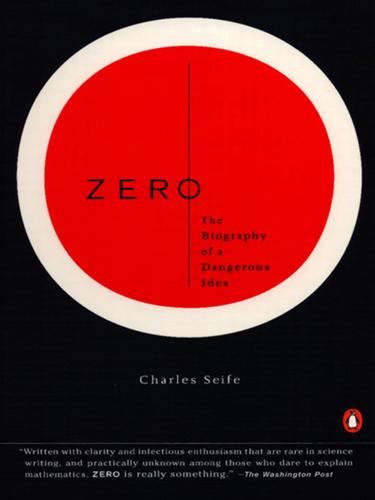
Zero: The Biography of a Dangerous Idea
by
Charles Seife
Published 31 Aug 2000
Astronomers had little idea that anything lay beyond our own dusty little disk of stars. Though astronomers had spotted some glowing, swirly clouds, there was little reason to believe that they were anything but glowing gas inside our galaxy. In the 1920s that all changed, thanks to an American astronomer named Edwin Hubble. A special type of star, called a Cepheid variable, had a property that allowed Hubble to measure the distance to faraway objects. Cepheid stars pulsate, getting brighter and dimmer in a very predictable way; the way they pulsate is closely related to how much light they put out. They are standard candles, objects of known brightness, and became a key tool for Hubble.
…
Index abacus, abacists Absolom, Karl absolute zero acceleration Achilles and the tortoise (Zeno’s paradox) Alembert, Jean Le Rond d’ Alexander the Great algebra fundamental theorem of Al-Ghazali, Abu Hamid algorists algorithms Al-Khowarizmi, Mohammed ibn-Musa American Revolution Analyst, The(Berkeley) “Anatomy of the World, An” (Donne) Anti-Duhring (Engels) Arabic numerals Archimedes axiom of “Sand Reckoner” of area and volume, measuring of Aristotle, Aristotelian doctrine God’s existence proven by India and rejection of vacuum as viewed by astronomers Atman atmospheric pressure atomism Augustine, Saint Azrael of Gerona Babylonians Bacairi banking base-10 system base-20 system base-60 system Bede Berkeley, George Bernoulli, Johann Bhaskara Bible Book of John big bang big crunch binary counting system binary numbers black holes space-time curved by string theory and Boethius, Anicius Book of Numbers, The (Conway and Guy) Bororo Boyle, Robert Bradwardine, Thomas Brahmagupta branes Brief History of Time, A (Hawking) Brunelleschi, Filippo Bruno, Giordano calculus calendars Egyptian Mayan Cantor, Georg cardinal numbers Cartesian coordinates Casimir, Hendrick B. G. Casimir effect Cavalieri, Bonaventura century, arguments over start of Cepheid variables Chandogya Upanishad Chandrasekhar, Subrahmanyan Charles, Jacques-Alexandre Christianity see also God Churchill, Winston, proof that he is a carrot cipher circle Cohen, Paul complex numbers complex plane computer programming Confessions, The (Augustine) conic sections continuum hypothesis “Convergence of the Twain, The” (Hardy) Conway, John Copernicus cosmic background radiation cosmological constant Counter-Reformation counting and numbers Indian starting with zero counting boards cubic polynomials Danzig, Tobias dates decimal (base-10) system derivative, modern definition of Desargues, Gérard Descartes, René Dickens, Charles differential equations differentiation dimensions in painting and drawing Dionysius Exiguus Dirac, P.A.M.
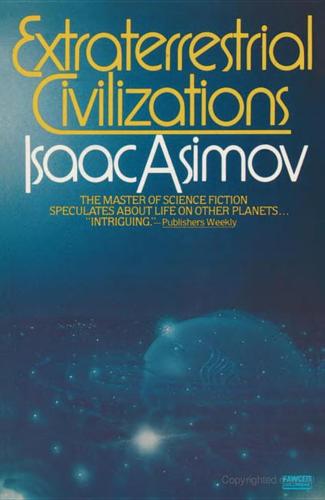
Extraterrestrial Civilizations
by
Isaac Asimov
Published 2 Jan 1979
Like the Milky Way, the Magellanic Clouds turned out to be assemblages of vast numbers of very dim stars, dim because of their distance. In the first decade of the twentieth century, the American astronomer Henrietta Swan Leavitt (1868–1921) studied certain variable stars in the Magellanic Clouds. By 1912, the use of these variable stars (called Cepheid variables because the first to be discovered was in the constellation Cepheus) made it possible to measure vast distances that could not be estimated in other ways. The Large Magellanic Cloud turned out to be 170,000 light-years away and the Small Magellanic Cloud 200,000 light-years away. Both are well outside the Galaxy.
…
It would probably not be an accident that it does so. Undoubtedly, the free-world’s astronomers would study all stars within so many light-years’ distance and suggest an approach to one that is particularly interesting. They might in this way study white dwarfs, neutron stars, black holes, red giants, Cepheid variables, and so on—all from a careful, safe distance. They may also favor approaching stars that are Sunlike in order to investigate (with some nostalgia, perhaps) the chances of a civilization in existence there. It could well be that there will be no impulse whatever to land on an Earthlike planet and to subject themselves to the long forgotten and by now possibly repulsive way of life on the outside of a world.

The Cancer Chronicles: Unlocking Medicine's Deepest Mystery
by
George Johnson
Published 26 Aug 2013
Using a device like Hillis’s, you could take their proteomic snapshots and lay one on top of the other and look for something that is different. Even if you don’t know what the pattern means, it might be used as a marker to identify which patients will most likely benefit from the drug. I was reminded of Henrietta Leavitt, the astronomer who had died of stomach cancer but not before discovering Cepheid variables, the pulsating stars cosmologists use to measure the universe. She would start with two images of the same patch of sky—glass photographic plates taken a few weeks apart. One would be a negative with the stars glowing in black. She would place that plate on top of the other and hold the glass sandwich to the light.
…
Burkitt’s lymphoma, 3.1, 5.1, 7.1 CA-125, 2.1, 13.1 cachexia Canada, 1.1, 11.1 cancer ambiguities in, 2.1, 2.2, 2.3, 4.1, 12.1 anthropological perspective on in children, 3.1, 3.2, 3.3, 3.4, 5.1, 7.1, 7.2, 11.1, 12.1, 12.2, 13.1 classification scheme for complex and convoluted nature of, 10.1, 12.1 as contagious debate over screening for detection methods for, 2.1, 3.1, 12.1 as disease of genetic information, 5.1, 9.1 earliest evidence in genus Homo, 3.1 evolving historical insights on, 4.1, 10.1, 12.1 fear of, 11.1, 12.1 hallmarks of, 9.1, 9.2 historical vs. current rate of, 3.1, 7.1, 10.1 identifying characteristics of incidence rates of, 7.1, 9.1, 13.1, 13.2 as incurable, 4.1, 12.1, 12.2 long term development of, 2.1, 10.1 mechanics of metastatic, see metastasis mortality rates from, 7.1, 9.1 oldest known case of, 1.1, 1.2 paradoxes of, 3.1, 5.1 perceived as contagious, 4.1, 5.1 as phenomenon physiological safeguards against, 1.1, 1.2, 4.1, 5.1 politics and predictions of epidemic of, 7.1, 7.2 in primordial creation as a process questions and hypotheses about randomness of, 2.1, 2.2, 6.1, 7.1, 8.1, 11.1, epl.1, epl.2 rare types of, 1.1, 8.1, 8.2, 9.1, 10.1, 12.1, 12.2 recurrence of, 2.1, 7.1, 9.1, 10.1, 12.1, 12.2, epl.1 reducing the odds in, 8.1, 13.1, epl.1 risk factors for, see cancer risk factors search for prehistoric origins of selectiveness in incidence of, 1.1, 1.2 sources of survival rates for, 4.1, 12.1, 12.2, 12.3, epl.1 terminology of, 3.1, 6.1, 6.2, 9.1, 11.1, 12.1 testing for trivializing of, 12.1, 12.2 worldwide incidence of, 7.1, 11.1 see also Johnson, Joe; Maret, Nancy (author’s wife), cancer of; specific types of cancer cancer clusters, 2.1, 7.1 Cancer Genome Atlas “cancering,” “cancer juice,” cancer microenvironment cancer prevention dubious and contradictory information on lifestyle in, 7.1, 10.1 cancer research, 1.1, 2.1, 7.1 ambiguities in evolution of, 5.1, 9.1, 12.1, epl.1 monetary aspects of, 9.1, 12.1, 12.2, 12.3 Nancy’s personal neglected types in new perspectives on pharmaceutical companies in, 9.1, 12.1 public support and hype in, 12.1, 12.2 on radiation statistical, 12.1, 13.1 two factions in see also specific studies cancer risk factors, 7.1, epl.1 ambiguity about, 7.1, 10.1 demographic, 7.1, 7.2 endemic, 1.1, 1.2 environmental, 1.1, 1.2, 2.1, 3.1, 7.1 genetic, 2.1, 2.2, 3.1, 7.1, 7.2 of lifestyle, 1.1, 2.1, 7.1, 7.2 metabolic multiple and interconnected, 10.1, 12.1 overestimation of radiation as, 3.1, 3.2, 5.1, 7.1, 7.2, 11.1 research into, 7.1, 10.1 socioeconomic synergistic interactions in trauma and injury as see also carcinogens, carcinogenesis; specific risk factors cancer stem cell theory cancer treatments ethical issues in historical, 3.1, 10.1 Joe’s, see Johnson, Joe, treatment strategy for limited effectiveness of, 9.1, 12.1 Nancy’s, see Maret, Nancy (author’s wife), cancer of, treatment strategy for new perspectives on, 9.1, 13.1 predictions of cure in, 9.1, 9.2, 12.1, 13.1 shortcomings of, 2.1, 12.1 unnecessary, 2.1, 12.1 Cancer Ward (Solzhenitsyn), 12.1, 12.2, epl.1 canine transmissible venereal tumor carcinogens, carcinogenesis, 2.1, 2.2, 3.1, 5.1, 5.2, 10.1, 13.1, epl.1 artificially produced, 7.1, 7.2, 10.1 bans on carbon-based in chemotherapy, 8.1, 8.2 environmental, 7.1, 7.2, 10.1 inconclusive hypothesis on metabolic naturally occurring, 2.1, 5.1, 7.1, 11.1, 11.2 origin of term see also specific cancer risk factors carcinomas, 1.1, 2.1, 3.1, 3.2, 3.3, 3.4, 4.1, 5.1, epl.1 as most common cancer, 6.1, 6.2 Carnegie Museum of Natural History, 1.1, 1.2 Carson, Rachel castration cat scratch fever “Causes of Cancer, The” (Doll and Peto), 7.1, 7.2 celebrities celibacy Cell, cell adhesion molecules, 5.1, 6.1 “cell fate,” cell invasion cells aerobic and anaerobic aggressive multiplication of, 1.1, 1.2, 2.1, 3.1, 3.2, 5.1, 5.2, 5.3, 7.1, 12.1 collaboration among differentiation of, 4.1, 6.1, 6.2, 9.1 duplication errors in, 1.1, 1.2, 2.1, 2.2, 2.3, 3.1, 5.1, 5.2, 7.1, 7.2, 8.1, 13.1 electricity and evolving historical insights on in mechanics of cancer in metastasis polarization in precancerous, epl.1, epl.2 programmed death of, see apoptosis cellular phones, 13.1, 13.2 Cepheid variables, 13.1, 13.2 cerebellum cervical cancer, 5.1, 7.1, 7.2, 7.3, 10.1 cervix Chase, Martha Chemical Weapons Convention chemotherapy, 2.1, 5.1, 7.1, 8.1, 9.1, 9.2, 9.3, 12.1, 12.2, 12.3, 12.4, 13.1, 13.2 alternatives to Joe’s Nancy’s, 8.1, 11.1, 11.2 negative effects of, 4.1, 8.1, 8.2, 8.3, 8.4, 8.5, 11.1, 12.1, epl.1 process of, 8.1, 11.1 resistance to, 8.1, 8.2, 9.1, 12.1 Chernobyl nuclear plant, 11.1 chickens tumor research on childlessness cancer risk from, 2.1, 2.2, 2.3, 7.1, 7.2, 8.1, 10.1 of Nancy, 6.1, 11.1 children cancer in, 3.1, 3.2, 3.3, 3.4, 5.1, 7.1, 7.2, 11.1, 12.1, 13.1 deformities of, 6.1, 7.1 chimney sweeps, 5.1, 10.1, epl.1 chondroblastomas chondrosarcoma Christmas chromosomes, 5.1, 5.2, 5.3, 5.4, 7.1 cigarettes, see smoking circadian disruption cisplatin, 8.1, 8.2, 8.3, epl.1 Cleveland Museum of Natural History clinical equipose clones CM 72656 (dinosaur bone) coal tar, 5.1, 10.1, 10.2, epl.1 coffee, carcinogens in cohorts Cohort Study of Mobile Phone Use and Health (COSMOS) colon cancer, 2.1, 4.1, 5.1, 7.1, 7.2, 9.1, 10.1, 10.2, 10.3, 12.1 colonoscopy Colorado, 1.1, 1.2, 1.3 colorectal cancer, 2.1, 3.1, 3.2, 7.1 as common risk factors for colorectal polyps conifers “Contagious Cancer,” contraceptives cortisol cosmology creation theory, 6.1, 9.1, 9.2 Cretaceous period, 1.1, 1.2 Crick, Francis, 5.1, 9.1 Crookes, William crown gall CT scans, 2.1, 3.1, 3.2, 11.1, epl.1 Curie, Marie, 5.1, 11.1 Curie, Pierre, 5.1, 11.1 curies Curran, Tom cycads cyclopamine, 6.1, 12.1 Cyclopes cytokines dacarbazine Dana-Farber cancer center, 1.1, 12.1, 12.2 Darwinian evolution, 1.1, 4.1, 7.1, 9.1 cancer development and, 4.1, 7.1, 12.1, 13.1 David, A.
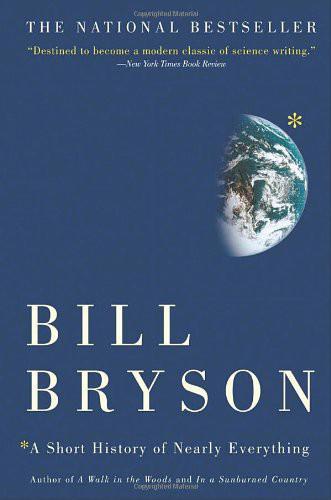
A Short History of Nearly Everything
by
Bill Bryson
Published 5 May 2003
The system, however unfair, did have certain unexpected benefits: it meant that half the finest minds available were directed to work that would otherwise have attracted little reflective attention, and it ensured that women ended up with an appreciation of the fine structure of the cosmos that often eluded their male counterparts. One Harvard computer, Annie Jump Cannon, used her repetitive acquaintance with the stars to devise a system of stellar classifications so practical that it is still in use today. Leavitt's contribution was even more profound. She noticed that a type of star known as a Cepheid variable (after the constellation Cepheus, where it first was identified) pulsated with a regular rhythm—a kind of stellar heartbeat. Cepheids are quite rare, but at least one of them is well known to most of us. Polaris, the Pole Star, is a Cepheid. We now know that Cepheids throb as they do because they are elderly stars that have moved past their “main sequence phase,” in the parlance of astronomers, and become red giants.
…
Using his formula, Hubble calculated that the universe was about two billion years old, which was a little awkward because even by the late 1920s it was fairly obvious that many things within the universe—not least Earth itself—were probably older than that. Refining this figure has been an ongoing preoccupation of cosmology. Almost the only thing constant about the Hubble constant has been the amount of disagreement over what value to give it. In 1956, astronomers discovered that Cepheid variables were more variable than they had thought; they came in two varieties, not one. This allowed them to rework their calculations and come up with a new age for the universe of from 7 to 20 billion years—not terribly precise, but at least old enough, at last, to embrace the formation of the Earth.

AIQ: How People and Machines Are Smarter Together
by
Nick Polson
and
James Scott
Published 14 May 2018
Please contact the Macmillan Corporate and Premium Sales Department at 1-800-221-7945, extension 5442, or by email at MacmillanSpecialMarkets@macmillan.com. First Edition: May 2018 * For you spreadsheet wizards, this is like making a pivot table. * These were later discovered to be a special class of pulsating stars called “Cepheid variables.” † This is a slight oversimplification. Leavitt’s line allowed you to work out the true brightness of a pulsating star, relative to the true brightness of any other pulsating star. So the technically correct statement is this: once you know the true brightness of one pulsating star—just one—then from Leavitt’s pattern, you can immediately work out the true brightness of any other pulsating star in the universe.

Wireless
by
Charles Stross
Published 7 Jul 2009
“We’re nowhere near our original galactic neighborhood and whoever moved us here, they didn’t bend the laws of physics far enough to violate the speed limit. It takes light about 160,000 years to cross the distance between where we used to live, and our new stellar neighborhood, the Lesser Magellanic Cloud. Which we have fixed, incidentally, by measuring the distance to known Cepheid variables, once we were able to take into account the measurable blue shift of infalling light and the fact that some of them were changing frequency slowly and seem to have changed rather a lot. Our best estimate is eight hundred thousand years, plus or minus two hundred thousand. That’s about four times as long as our species has existed, gentlemen.

Beggars in Spain
by
Nancy Kress
Published 23 Nov 2004
Tony deserved better than that of his sister. Idealism. (Stoicism, Epicureanism “We are shaped and fashioned by what we love,” Tony’s butt pumping away in Christina…) She would solve this problem her own way (darkness, fullness, the throbbing ache, gravitational pressure to ignite gases into thermonuclear reactions, cepheid variables…). Miri washed her face and hands. She put on a clean pair of white shorts and tied a red ribbon in her dark hair. Her lips, despite their constant twitching, set together hard. She didn’t have to think whom to approach; she already knew, and knew that she knew, and knew all the implications of already knowing (darkness, fullness, lying on her belly on her lab floor or under the genemod soy plants that met in a concealing arc, her hands between her legs).